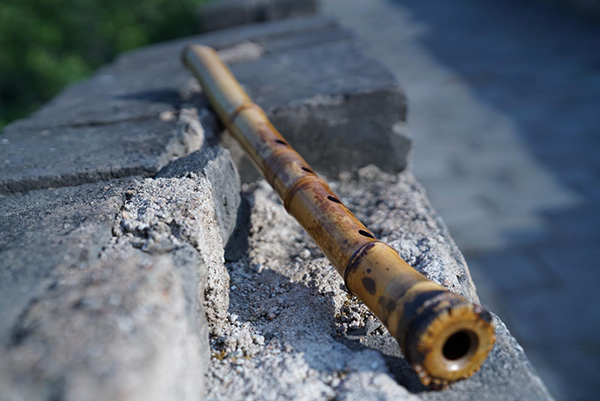 |
|
A shakuhachi, an instrument imported from China to Japan during the Tang Dynasty (618-907).[Photo provided to China Daily] |
With the support of her husband, she used mostly their own money to shoot the documentary, which had a budget of around 10 million yuan ($1.45 million).
"It was a long process finding shakuhachi artists and persuading them to take part in the documentary. But all of their stories were emotional and touching," says Yu.
For instance, Taiwan musician Cai Hong-wen previously worked as a highly-paid aircraft engineer, before he quit his job to teach students to play shakuhachi at the Wuhan Conservatory of Music in the Hubei province capital.
Now, earning just a fraction of what he used to, Cai is happy that he has realized his dream, and has married and settled down in Wuhan.
Statistics suggest that around 60,000 people in Japan play the shakuhachi, while the number in China is less than 1,000, according to the online news site, The Paper.
Joining the director and two Japanese shakuhachi players, Kinohachi and Kominato, in attending the Beijing premiere on May 23, Cai says the documentary has already raised awareness of this lesser known instrument.
A trailer for the documentary has already been viewed 130 million times online, Cai says, breaking the mold for videos about shakuhachi, which usually attract no more than 3,000 views.
"Shakuhachi performers and fans are not able to reach such a wide audience if they rely on their own efforts to promote themselves," says Cai, adding that cinema is an effective medium to shine the spotlight on the struggling musical art form in China.